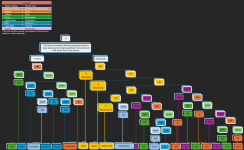SimonDoom
Kink Lord
- Joined
- Apr 9, 2015
- Posts
- 20,073
Did you learn sentence diagramming in school?
I did, and for some reason I always liked it. It helped make sense of the structure of sentences and the parts of speech. It made grammar seem less random.
I don't know if it's still taught in schools. I don't think my kids learned it when they were in school. I wonder if it has just disappeared in schools now. For those of you who are younger (born after 1980), did you learn it in school?
I did, and for some reason I always liked it. It helped make sense of the structure of sentences and the parts of speech. It made grammar seem less random.
I don't know if it's still taught in schools. I don't think my kids learned it when they were in school. I wonder if it has just disappeared in schools now. For those of you who are younger (born after 1980), did you learn it in school?

